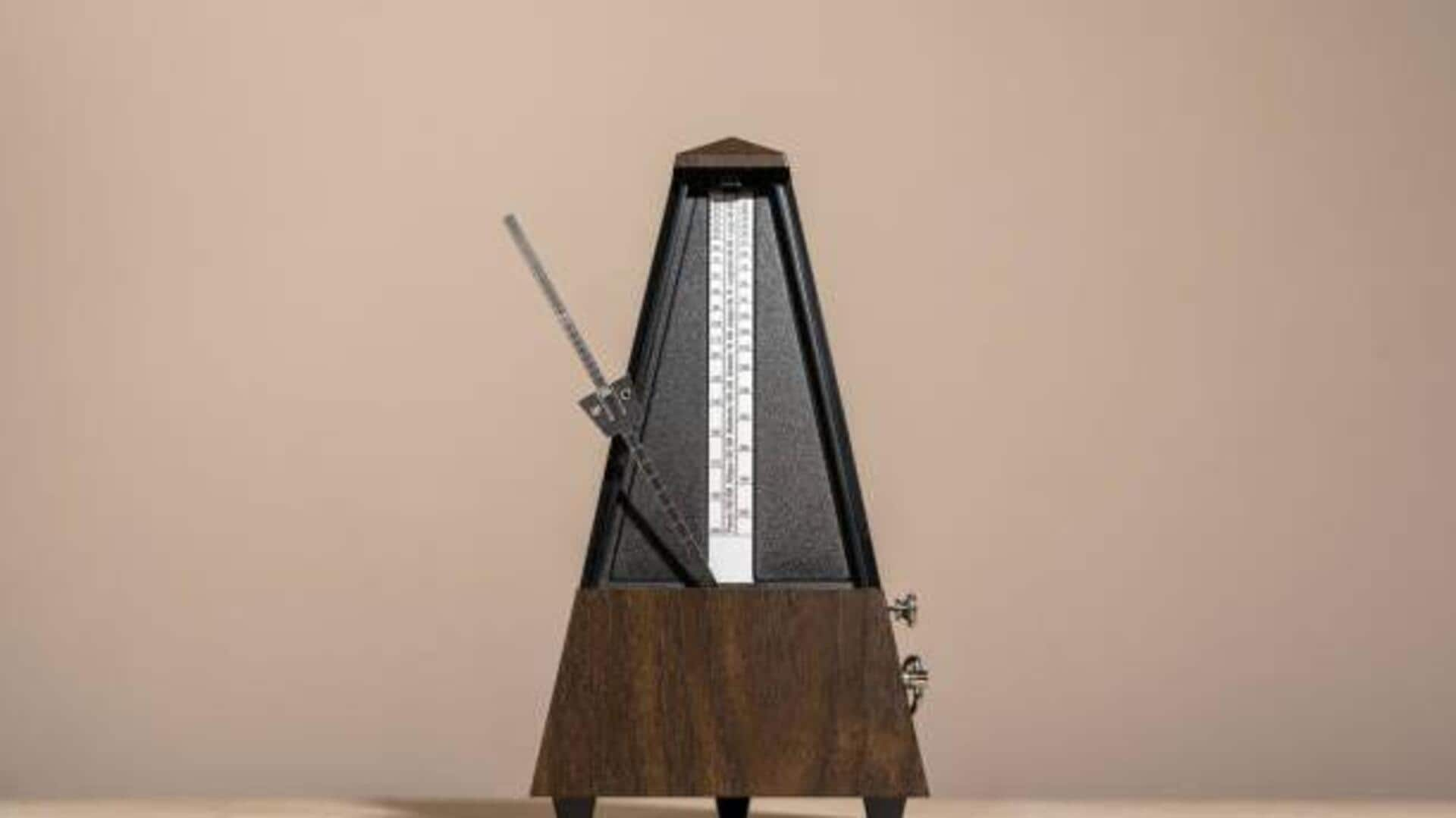
Metronome mastery: 5 tricks every budding musician should know
What's the story
Why is working on metronome precision important for musicians? This article details five effective exercises for improving your ability to play in time with a metronome, an essential tool for any musician striving to build a solid rhythmic foundation. These exercises cover a range of techniques, from simple to more complex, making them suitable for musicians of all skill levels.
Foundation
Start with slow tempos
Starting with slow tempos helps musicians concentrate on the precision of each note or beat. Set the metronome to a slow pace (like 40 beats per minute (BPM)) and play basic scales or chord progressions. Focus on hitting each note exactly with the click of the metronome. This drill builds a robust sense of timing from the ground up.
Progression
Increase speed gradually
Once you're comfortable with slower tempos, start ramping it up! Increase the tempo by five BPM at a time, ensuring you maintain accuracy as you push your limits. Nailing it slow and steady is key, but so is ripping it at a faster pace. This gradual increase challenges your adaptability and rhythm control, ensuring you can handle tempo changes without missing a beat.
Detailing
Use subdivisions
Subdividing beats is a key skill for improving timing accuracy. If the metronome is set at 60 BPM, you should practice imagining or playing notes that fit into two, three, or four subdivisions within each beat. This technique greatly enhances your ability to maintain steady timing, particularly when playing more complex rhythms that involve fitting several notes into each beat.
Versatility
Practice with different time signatures
To build flexibility in timing, practice playing pieces or exercises in different time signatures (three/four, four/four, six/eight, etc.) along with a metronome. Adapting to various time signatures allows musicians to develop versatility and accuracy across a wide range of musical contexts. It teaches them not just to keep time, but also to internalize the feel of different rhythms and how they fit with the metronomic pulse.
Dynamics
Incorporate dynamic changes
Adding dynamic changes while practicing with a metronome creates a more challenging exercise that further improves one's control over timing. Play passages softly, then gradually increase volume, or vice versa, while staying in time with the metronome clicks. This exercise pushes one's skills not only in keeping rhythm but also in manipulating intensity without sacrificing temporal accuracy.